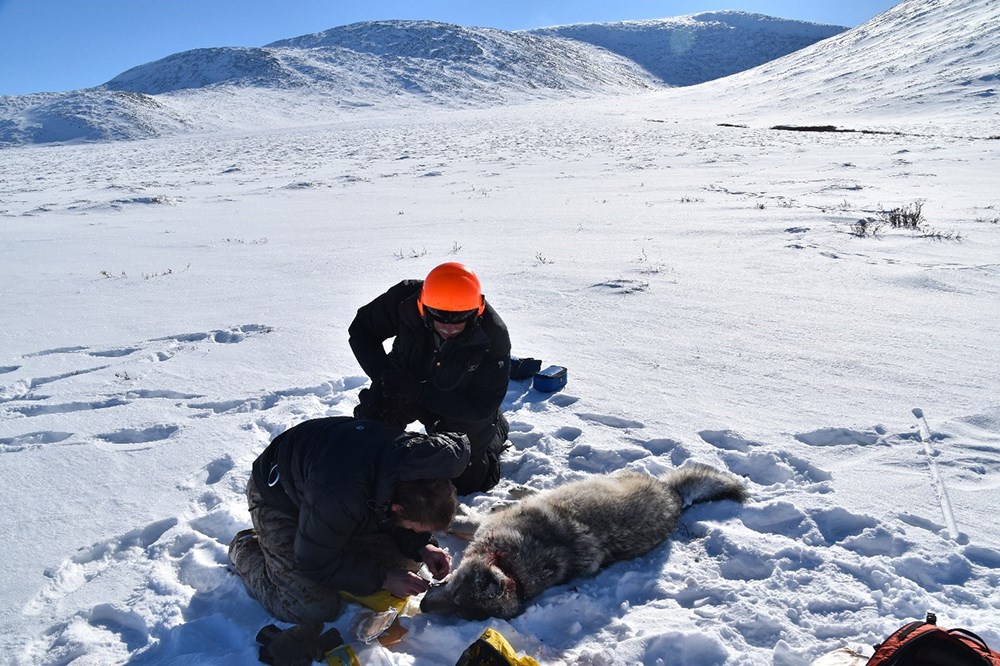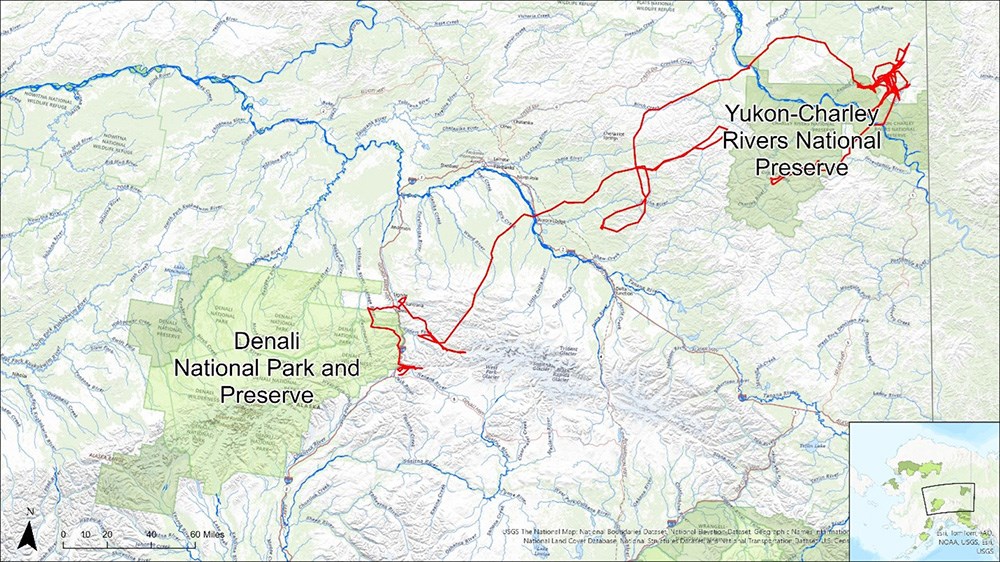Last updated: August 4, 2025
Article
Two National Parks, One Big Wolf Population Spanning 250 Miles


Using the 30-year dataset of wolf genetic samples collected during wolf captures, we examined genetic connectivity and relatedness between both parks. From 1990-2022, we identified 381 unique wolves (183 from Denali and 198 from Yukon-Charley).
We found that the wolf populations in each park were genetically similar to each other and documented three instances of wolves dispersing from one park to the other. Interestingly, all instances were a result of male dispersal that successfully established a new pack and reproduced. Together, our findings suggest wolves regularly travel and breed between both parks and provides support to the idea that Interior Alaska is home to one large, genetically connected population rather than many smaller genetically distinct populations.
Our findings show that despite the great distance between Denali and Yukon-Charley, the intact ecosystem and continuous distribution of wolves have likely maintained the genetic connectivity of these wolf populations.
Genetic Connectivity in a Cooperatively Breeding Carnivore Between Two Protected Areas
Abstract
Wildlife populations are increasingly threatened by human activities. Most studies, however, are often short in duration or do not encompass the large spatial extent necessary to measure the potential effects of human activities on population vital rates. Furthermore, the life history features of species with high fecundity and excellent dispersal capabilities can act as buffers against the potential negative effects of human activities on their populations. We used a 30-year dataset of genetic samples from gray wolves (Canis lupus) in Alaska, USA, to examine genetic connectivity and diversity between National Park units separated by a region with recurrent human-caused mortality. We found that the two protected populations were genetically similar and that dispersal events occurred between them even though they are > 450 km apart. We posit that intact ecosystems and a history of continuous distribution of wolves surrounding the affected regions likely maintained the genetic connectivity of wolves in the two protected areas.
Cerreta, A. L., J. R. Adams, B. L. Borg, M. S. Sorum, L. P. Waits, and D. E. Ausband. 2025. Genetic connectivity in a cooperatively breeding carnivore between two protected areas. Ecology and Evolution 15(5): e71420.
